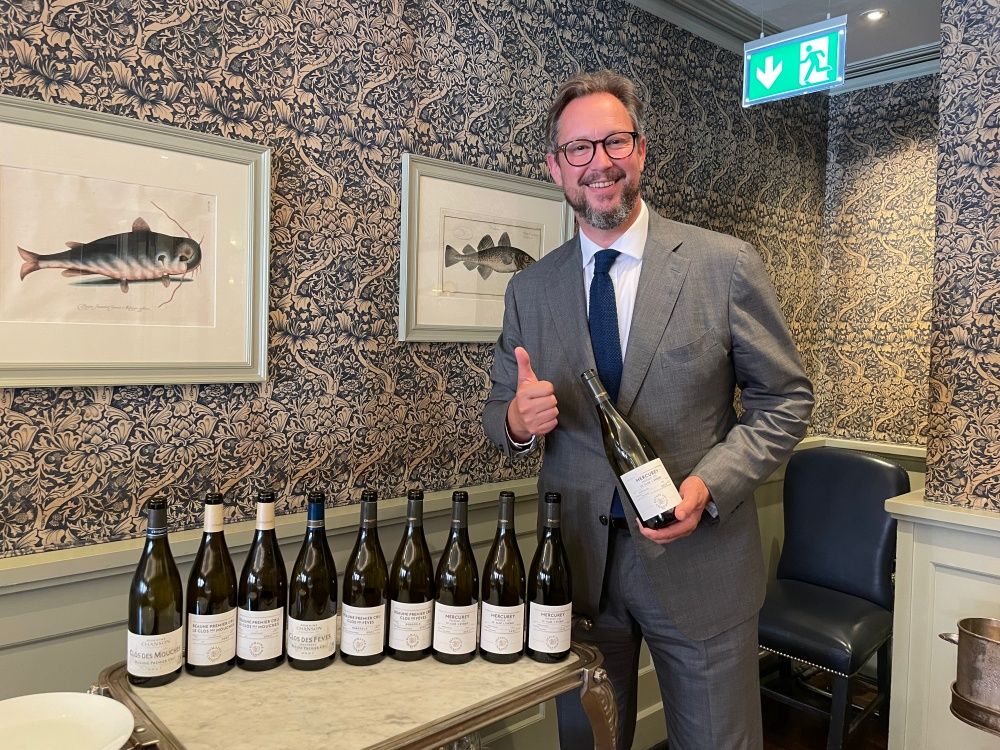“What makes St‐Rémy unique is that every step of production is done in France. We only use French wines that are distilled, matured, blended, and bottled in France,” explains master blender Cécile Roudaut.
Can you tell us about your background and how you got into drinks?

Cécile Roudaut’s career started in wine before moving over to the distilling side
I originally wanted to be an archaeologist but decided to study biology at university and ended up doing an internship in the cosmetics field. As contrasting as these three fields may seem, each of them required me to work with precious raw materials to create products, where the scents, textures and colours really brought out my desire to create and work with high quality materials.
This journey led me to a wine estate in Saumur, France where I discovered a wonderful world with countless possibilities as I learnt about winemaking, tasting, and blending. Here, I really discovered wine as a product which evolves constantly according to the harvests and the grape varieties. It was a revelation.
I then joined the Rémy Cointreau group in 1997 to work with the research and development team where I was responsible for several brands in the liqueurs and spirits division, including the brandy St‐Rémy. In 2016, I was appointed master blender for St‐Rémy, and the rest, as they say, is history!
What has working in distilling and with St‐Rémy brought you?
I was lucky enough to join the Rémy Cointreau group, which encourages the potential of the individual, regardless of gender, age, or origin. The group has made it very easy for me to express myself, to progress and to demonstrate my skills, through my work, my desire, and my professional responsibility. The progression in the company to my current position was very natural and once I chose this path of distillation, it was no more difficult for me to find my place in the company than it would have been for a man.
As a woman in spirits, I am proud to speak as an equal to my male counterparts, to interact with them and to constantly reinvent myself, while preserving the characteristics of the St‐Rémy DNA.
What are the key skills you need to have to be a master blender?
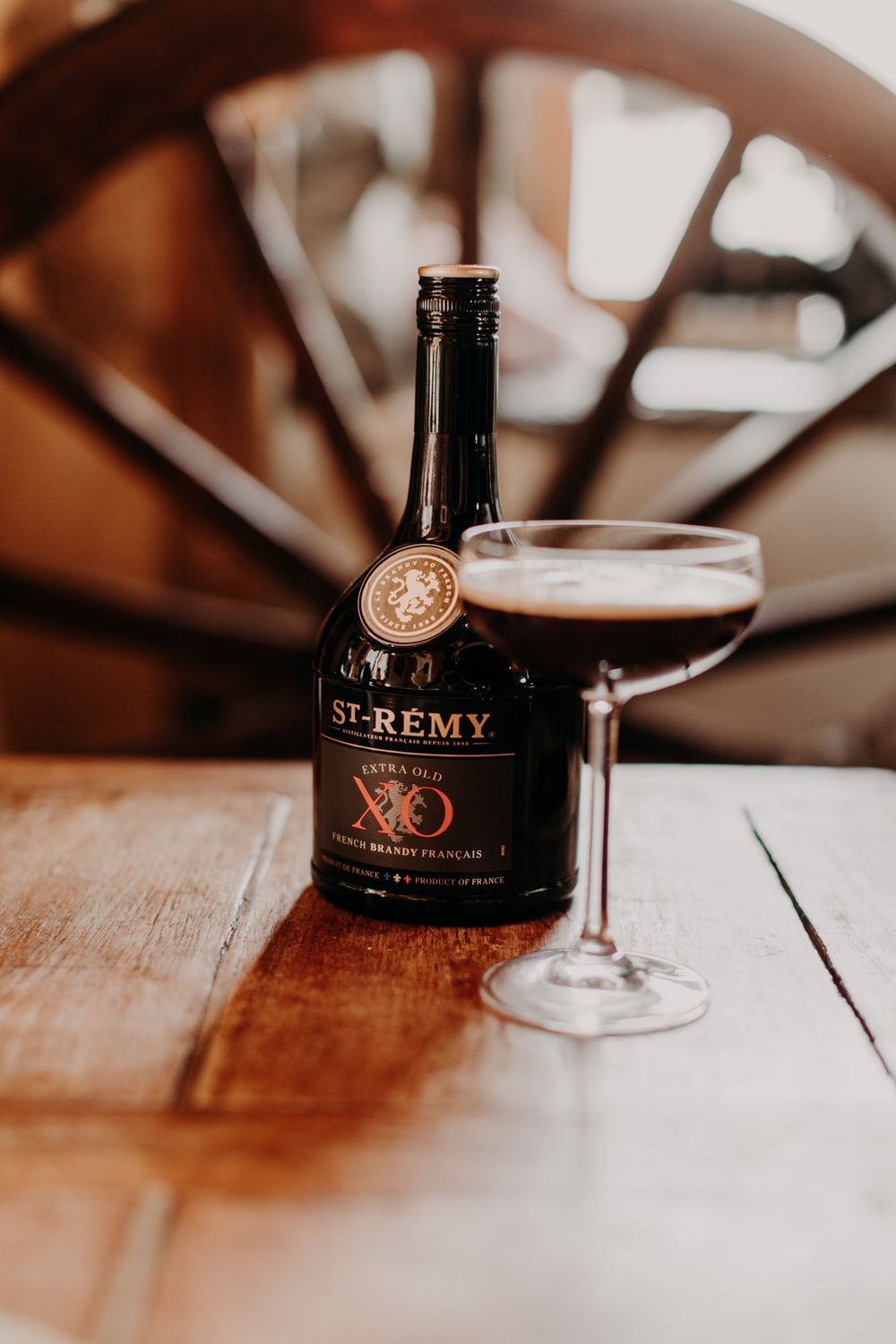
The sum of its parts: St-Rémy brandy is a celebration of France’s diverse grapes grown in regions across the country
As a master blender, you must be curious, open‐minded, and taste different products without prejudice to constantly improve and enrich the potential flavuor palette. You must be rigorous and stubborn too, because even if things don’t work right away, you always end up succeeding somewhere.
Doing a job like mine is exciting; you need to celebrate successes and learn from failures, but also stay humble because there is always something new to learn.
How did you train and what have been the key steps in your career?
Training and practice are hugely important in the master blender profession. Previously, in my career in the wine industry, I trained in quality assurance, which enabled me to develop rigour and a sense of organisation. Meanwhile, my training in oenology was equally important as it created a gateway to understanding the complex world of spirits.
At key stages of my career, I also had the chance to learn from great mentors, such as the chief oenologist when I was working in wine, and with Bernadette Langlais, Cointreau’s master distiller, now retired. Bernadette passed on to me the love of the product and pride in all the innovations we created. This inspiration enabled me to finally replace Martine Pain as master blender of St-Rémy with the full confidence of the Rémy Cointreau group.
What influence do you think you have had on the style and blend of St‐Rémy?
Today, I am the guardian of tradition; I ensure that VSOP and XO are always of consistent quality to satisfy our consumers. That means making sure that our St-Rémy brandies keep their authentic style, with the same fruity and harmonious taste year after year.
However, alongside this, my role is also to create and to innovate ‐ which I do with such pleasure and gratitude. It’s fantastic to always discover new emotions in brandy, around the terroir, the process, the recipe, the blend, the raw materials…
For instance, a few years ago we launched the Cask Finish Collection which is the top-end expression of our expertise in selecting casks and carefully maturing our brandy in various types of wood. We use casks that previously hold wines, such as chardonnay and Sauternes, or other spirits like rum and Islay whisky. Each release is a unique exploration and bottled in a very limited batch.
More recently we presented St-Rémy Signature, the new face for brandy, through which we explored new production processes and new aromas. Signature’s unique double maturation process results in a smooth and oaky taste, thanks to a first maturation in new oak casks (Quercus Patrea), giving the liquid intense spiced notes and verve, and a second maturation in traditional casks (Quercus Robur), adding balance and complexity. Versatile and easy-to-drink, St-Rémy Signature provides a unique base to reimagine classic cocktails with a brandy twist: it is the perfect balance of tradition and modernity.
What do you think makes St‐Rémy stand out vs its peers?
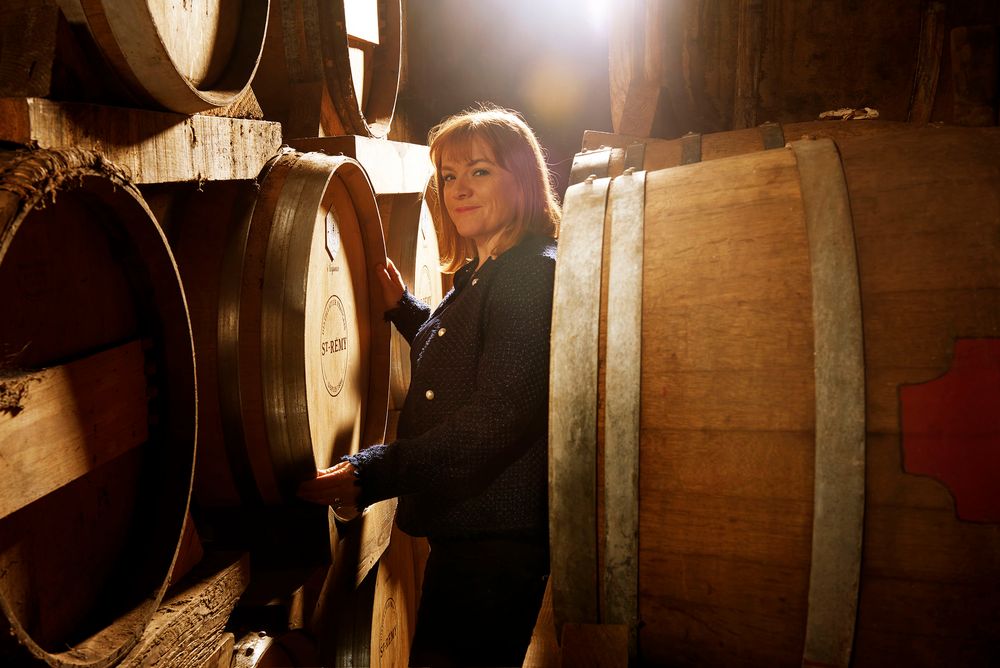
Cécile Roudaut is very aware of her place in history as master blender at such an important brandy distillery
Brandy is a vast category that can be made everywhere in the world; where you have wines, you can usually create brandy.
What makes St‐Rémy unique is that every step of production is done in France. We only use French wines that are distilled, matured, blended, and bottled in France. We have more than 130 years history of making St‐Rémy brandy this way since the distillery was founded in 1886 in the Loire Valley. In our process, a very specific point is the historical use of small casks, no more than 350 liters, which makes a big difference. The interaction surface between wood and eaux‐de‐vie is higher than in larger vats and provides a faster and stronger development of rich and harmonious aromas.
For me, another point that makes St‐Rémy unique is our sourcing of wines. We don’t source our wine spirits in just one region, meaning St‐Rémy is rich in the diversity of French vineyards: Champagne, Bordeaux, Burgundy, Languedoc‐Roussillon and of course the Loire Valley, which is particularly dear to my heart. This unique diversity of supply is the source of our fruity and harmonious style.
St‐Rémy is a particularly versatile spirit that is easy for the vast majority of consumers to enjoy. When we think of brandy today, we imagine a connoisseur enjoying all the incredible flavors that this spirit provides neat. However, let’s not forget that this product, with its incredible adaptability, can be a wonderful ingredient in many cocktails. These traditional drinks have been the driving force behind the current mixology culture, which has restored brandy’s place in the cocktail world. The possibilities for drinking St-Rémy pure or mixed, are endless.
You are also involved in teaching ‐ how did you get into that?
I graduated from the University of Angers, in the Loire Valley. In the early 2000s, one of my former professors called me for help because she needed a professor on the sensory analysis part.
During this time, I supervised second‐year students and gave presentations to first year students to explain R&D, innovation, and new product design. Sometime later, I gave lectures to third year students on food biochemistry and food safety. Most recently, I have also been teaching wine subjects in an engineering school. It is a pleasure to share my knowledge and passion with people who are eager to learn.
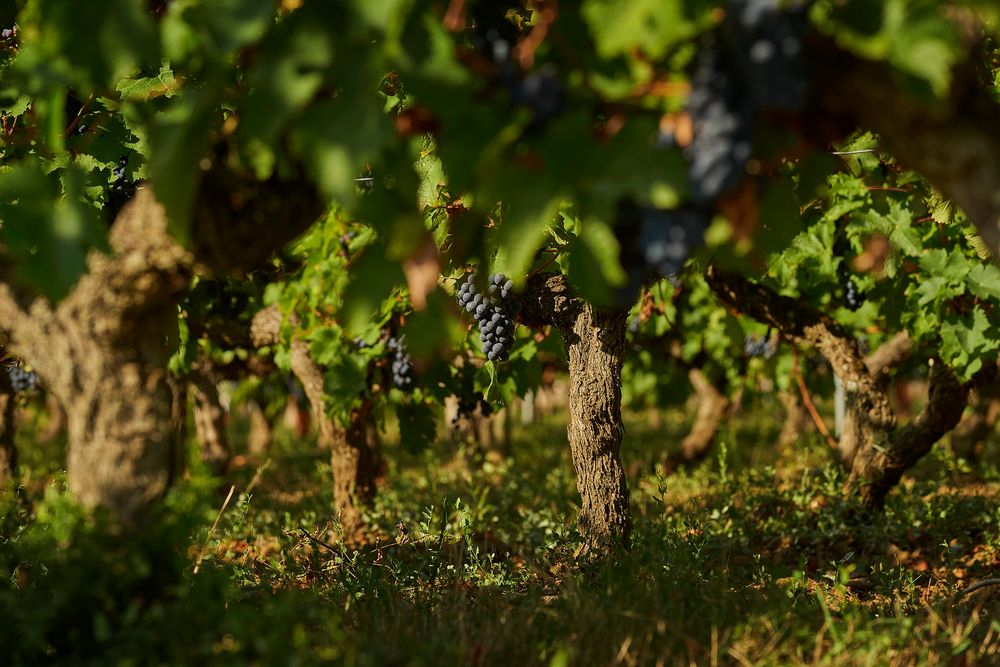
It all comes down the quality of grapes used in St-Rémy brandy
What is your approach to teaching and what do you think works well with your students?
Every year, I renew my courses for two reasons: I don’t want to get bored, and I don’t want to bore my students either. When I look at the presentations I used to teach against how we educate today, with a lot of visuals, examples and concrete cases, there really is no comparison – it is amazing how it has evolved.
I like the constructive and enriching exchanges I can have with students; it allows me to stay connected with a young audience who are increasingly using modern communication tools: for example, on sensory analysis the tests are built online with QR codes.
I have stayed in touch with a number of former students, and some have entered the world of spirits and sensory analysis. It is wonderful to see how all these years later and after only a few days of teaching, I was able to help influence these students. I can safely say this is one of my greatest accomplishments.
What outstanding ambitions do you have as a blender?
My ambitions as a master blender are simple and great at the same time. St‐Rémy will soon be 140 years old, and I would like it to still be around in 140 years, making beautiful products.
Right now, in my current role, I hope my new St‐Rémy Signature will continue to meet great success and become the favorite brandy of a multitude of consumers as it expands worldwide. However, most importantly, I am hoping to remain in the genealogy of master Blenders and join them in leaving a beautiful mark between respect for tradition and innovation.
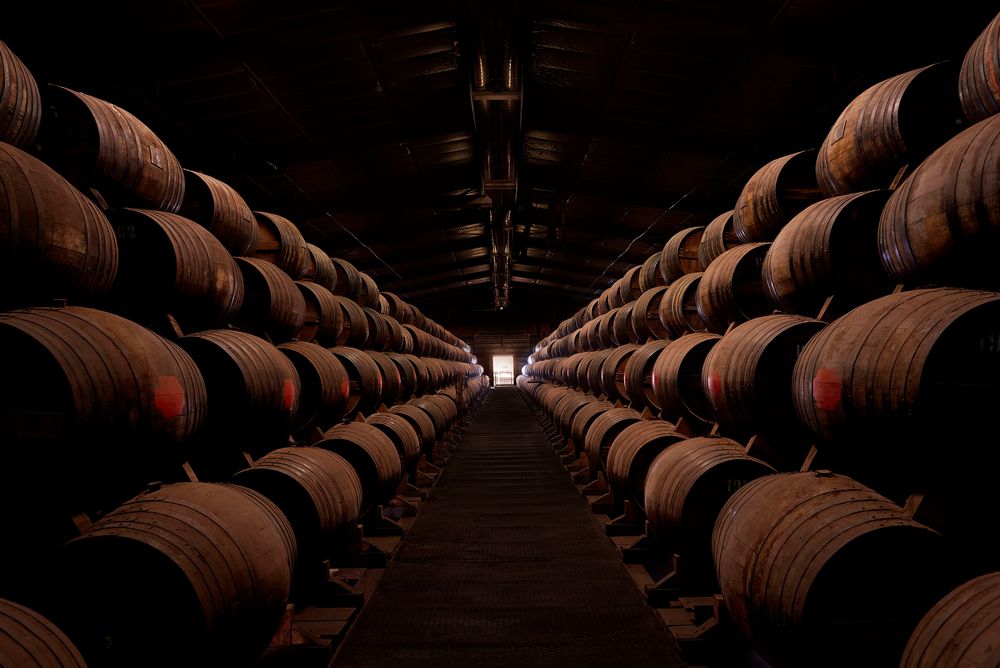
Decades of experience goes into the blending and ageing of St-Rémy brandies
I also want to work actively on sustainable development to protect the future of the brand, and more widely, of French viticulture.
What else would you like to do with St‐Rémy to help build and grow the brand?
I want to work as close as possible with the raw materials, the vine, and the wine, and to capitalize on sustainable development. We will soon be confronted with major climatic challenges that will change the face of French viticulture, and I hope to participate in studies that will lead to the development of wine spirits and create a better sustainability footprint.
What do you think it takes to be a good master blender?
Being a good master blender takes audacity and a willingness to look for the ‘new’, whilst embracing the old.The olfactory notes are a bit like music notes; they must be harmonious, whilst formulation is an art of trusting the senses; I know where I am going before acting, thanks to the range of tastes and smells I feel.
Being a master blender is not about the creation of eaux‐de‐vie, but a blend, a coherent whole to get to the best balance, with small touches and details along the way.
- If you would like to find out more about St-Rémy brandy then go to its website here.

